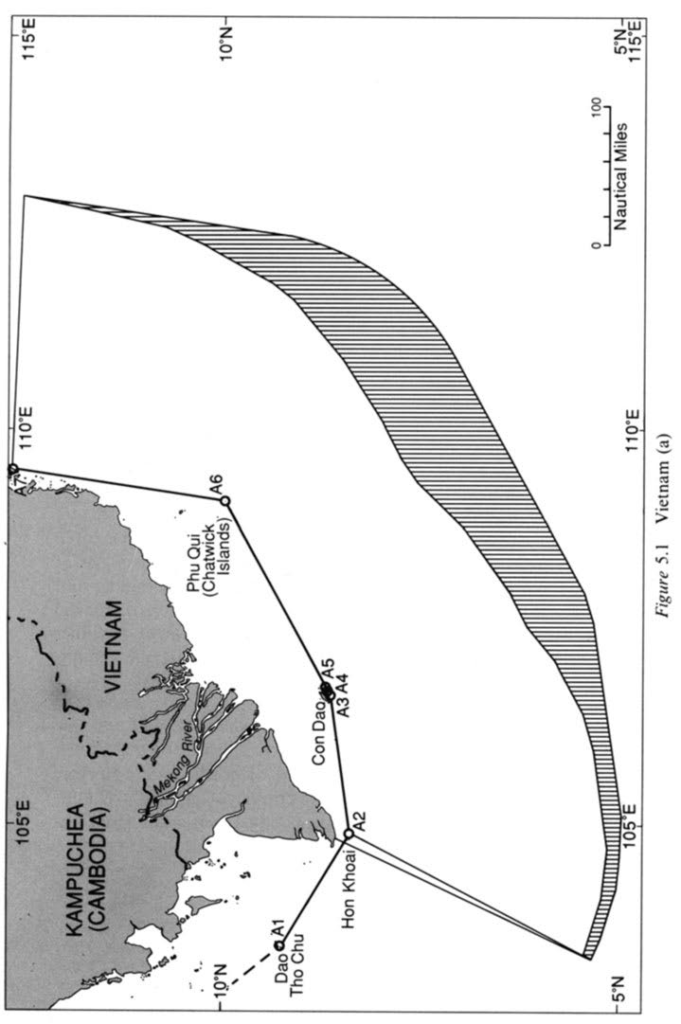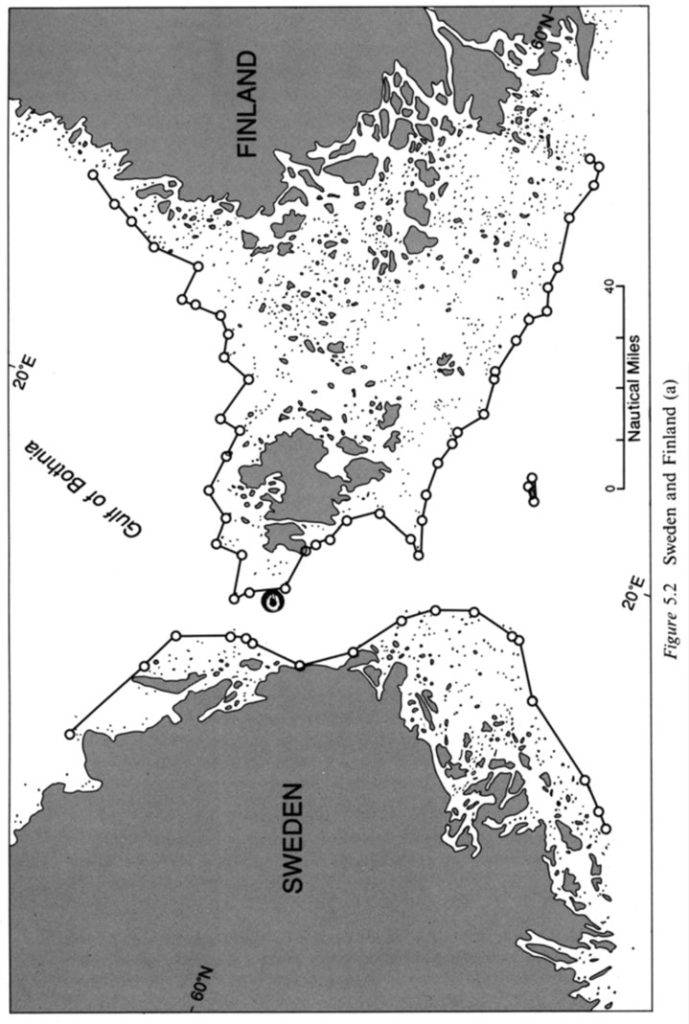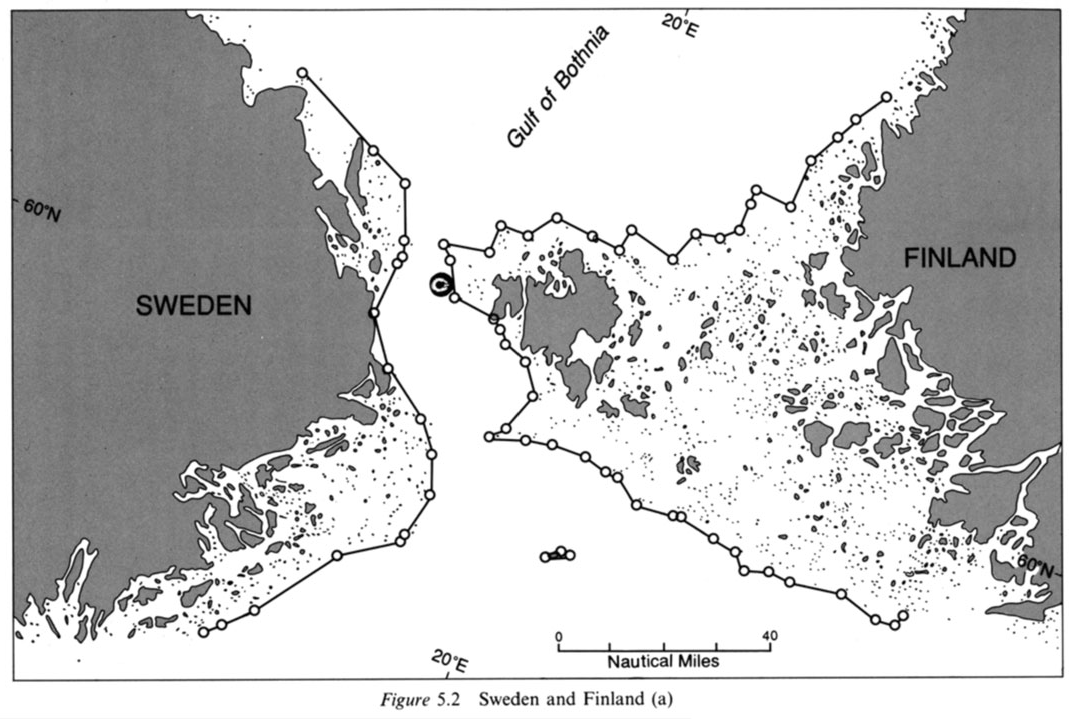As one might expect, most of the coastline of northwestern Norway
meets one or both of the geographical criteria of Article 4 (LOSC
Article 7), as those criteria were taken almost verbatim from the Court’s Judgment in the Anglo-Norwegian Fisheries case. This is not to say, however, that because the Norwegian baselines were approved
in that case, all of the baseline segments are per se appropriate.
Although much of the coast is deeply indented or fringed with
islands, several baseline segments appear to conform to neither the
Court’s own guidelines in that case nor to the Article 4 (LOSC Article
7) guidelines which derived from it. As noted in our discussion of the
Fisheries case in Chapter 2, the baseline segment of 39 miles crossing
the compound bay of Svaerholthavet and the baseline segment of 44
miles enclosing Lopphavet were criticized by Judge Hsu in a separate
opinion as cutting off several hundred miles of theretofore high seas
and departing more than appreciably from the general direction of the
coast. But the majority of Norwegian baselines utilize appropriate
basepoints in substantial conformity with Article 4 (LOSC Article 7).
Like Norway, several localities along the coasts of Sweden and
Finland are deeply indented or fringed with “skerries” in the immediate
vicinity. Figure 5.2 illustrates a portion of both the Swedish and the
Finnish straight baseline claims. The baselines are relatively short and
tend to follow the general direction of the coast. It must be noted,
however, that this conclusion is based on the tautologous nature of
“coast” discussed. As in the case of the Norwegian baselines, once you have defined the “coast” as the outer perimeter of the skjaergaard, then, of necessity, the baselines drawn linking the
outermost islands will follow the general direction of the “coast.” The
waters enclosed appear to be sufficiently closely linked to the land
domain in both proximity and presumptive patterns of usage to be
subject to the regime of internal waters.



